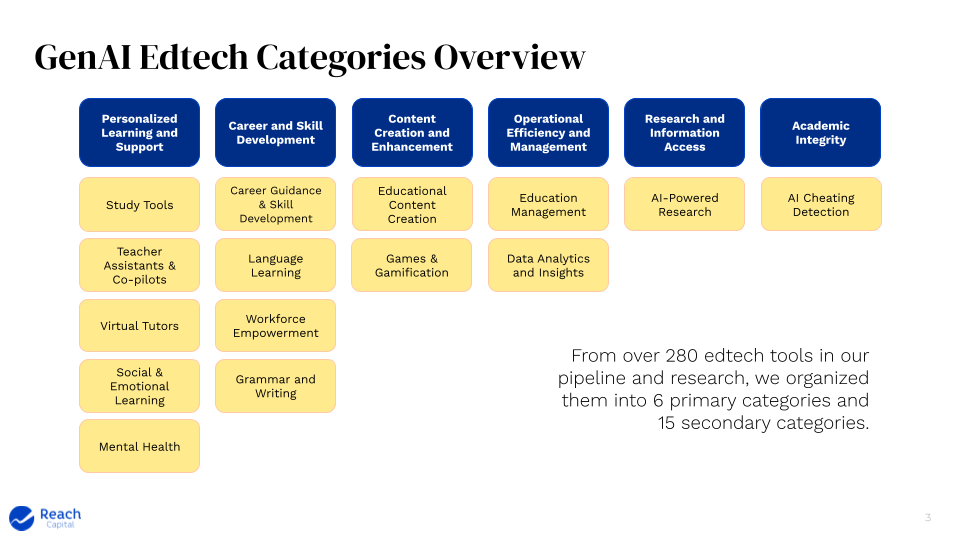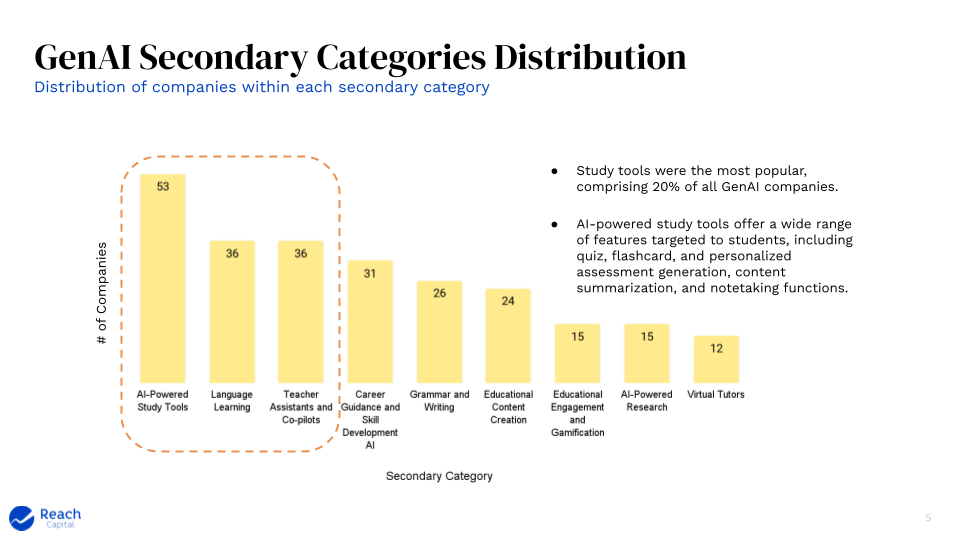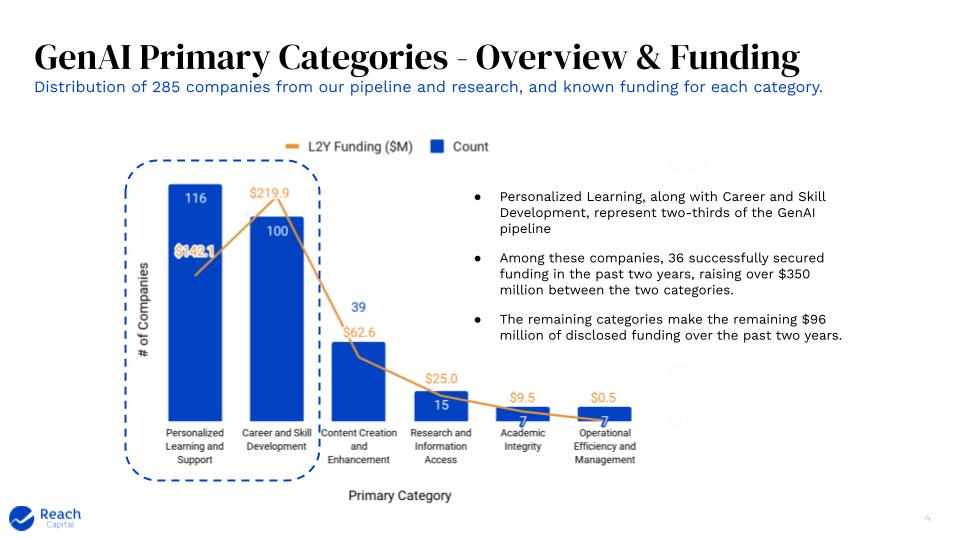AI are the two most popular letters of the alphabet these days, and no wonder: Hardly a day passes without some major advancements in the core foundational models, or the launch of new, powerful applications built on them.
So far this year, our pipeline and research have identified over 280 education tools that incorporate generative AI as a core engine of their product — and that’s likely just scratching the surface. Every week we see more from our AI + Learning Catalyst, our pipeline for pre-seed stage AI edtech tools. (If you are building AI for education and the workforce, reach out!)
Fueling this deluge is the fact that generative AI itself has democratized software development, enabling many more people to be builders. Knowing a little coding and prompting can now go a long way toward creating something useful. More simply put: if it can be described, it can probably be built. In our pipeline, we’ve seen seasoned engineers, developers and product designers alongside college students and classroom teachers building educational software.
To get a better lay of this landscape, we bucketed these tools across six primary categories and 15 secondary categories. Note: this organization is more a starting, illustrative effort to show the expanse of tools we’ve seen. The reality is that Generative AI is forcing us to continually rethink and redraw traditional boundaries of the education landscape.

Some categories have attracted outsized attention and efforts. AI-powered study and tutoring tools that offer not just answers but personalized explanations remain at the top of the chart. Workflow tools that save time — particularly teacher assistants and “copilots” that help create lesson plans, assignments and assessments — have also proliferated. Some are designed by former educators, informed by their own experiences and pain points.

Other categories hold immense potential for impact but have seen fewer tools (at least for now). Take research, for example. Many world-changing innovations began as research, and countless products and technologies (including AI itself) continue to benefit from the latest research. Yet such knowledge is often gated behind paywalls or otherwise largely inaccessible. We’ve been encouraged by the emergence of tools like Elicit that can surface, summarize and disseminate the most relevant information, and in doing so accelerate the process of applying research to practice and products.
Do the popularity of categories correlate to their level of investment? So far, there is a loose correlation. Career and skill development tools have raised larger sums of money, which is consistent with macrotrends in funding for workforce and corporate learning markets.

In the deck below, we dive deeper into each of the categories, looking at common applications and differentiating factors, along with a map of new entrants, funded startups and incumbent companies in each space.
Key Considerations
AI is evolving at a rapid clip, and there are real fears of tools quickly becoming outdated or outclassed. (See: Jasper). Still, there are underlying fundamental business and pedagogical principles to building successful edtech companies worth keeping in mind.
Research as a competitive differentiator. AI foundation models are evolving rapidly, as are strategies and techniques around fine-tuning and prompting. “Keeping an eye on the cutting edge research will be important to staying competitive,” Replit CEO Amjad Masad recently shared with us.
Having proprietary data for fine-tuning and training LLMs is another advantage, and here incumbent companies may have a head start. But AI-native upstarts that create delightful user experiences and create sticky products can catch up on acquiring user data.
Empathy is key to creating new “sticky” behavior. Builders who deeply understand their users’ workflows and they can be augmented by AI will have a leg up. It’s no surprise that some teacher co-pilots are built by former teachers themselves. A school principal built MagicSchool, a lesson planner and assessment generator; another pair of principals are working on EnlightenAI, an AI-assisted grading tool for essays. There is plenty of tedious, repetitive work that can and should be outsourced. “Sell work, not software,” writes Benchmark general partner Sarah Tavel.
Another consideration is how new AI tools integrate with existing software in schools and workplaces. These tools are often outdated and deserving of disruption, but enterprise tech stacks are often entrenched and not quickly replaced.
Effective pedagogy reigns supreme. We’ve long believed that the best edtech tools are those informed by educational research, and AI that enables and scales proven pedagogical practices are the most impactful. There is a lot of hope for AI tutors, and they may well be capable of handling content and instructional delivery. But how well can they motivate, inspire and understand the complexity of young, developing minds?
Key metrics retain their significance. But benchmarks may change. As the newness and novelty of generative AI fades, user retention is an important sign of whether a tool is capitalizing on being a neat trick, or actually providing lasting value. While AI is changing rapidly, business fundamentals have not. Ease of use, customer satisfaction, revenue retention and healthy unit economics all remain crucial.
However, Generative AI may also recalibrate best-in-class benchmarks. For instance, the general rule of thumb for a good LTV-to-CAC ratio is 3:1. But with AI lowering the cost of sales, marketing, content development efforts, thus overall accelerating the time-to-market for product development, is that still the right benchmark? With the growing adoption of AI productivity tools, every company is retooling their internal workflows to reduce expenditures and improve operational efficiency.






